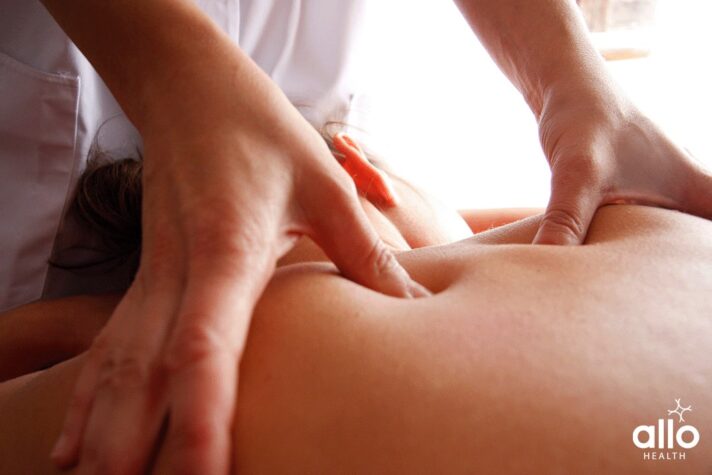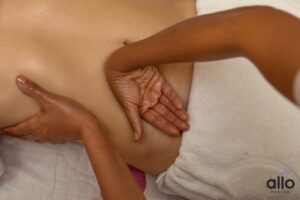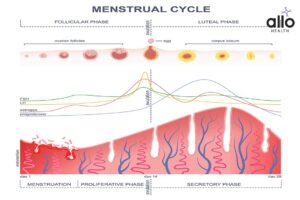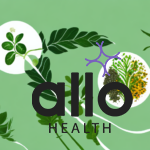7 Acupressure Points to Get Your Periods Immediately

Allo Health is dedicated to personalized well-being, offering support and trusted information tailored to individual health goals. The platform emphasizes human-generated content, led by a distinguished medical team of experts, including physicians and sexual health specialists. Their commitment to credibility involves rigorous fact-checking, authoritative research, and continuous updates to ensure accurate, up-to-date information. Allo Health's unique approach goes beyond conventional platforms, providing expert-led insights and a continuous commitment to excellence, with user feedback playing a crucial role in shaping the platform's authoritative voice.

Dr.Sushma.V completed MBBS degree from BGS GIMS,bangalore
Why This Was Upated?
Our experts continually monitor the health and wellness space, and we update our articles when new information became available.
Updated on 21 December, 2023
- Article was updated as part of our commitment to diversity, equity, and inclusion.

"The following blog article discusses alternative medicine practices and their potential effects or benefits. However, it is important to note that the information provided is for general educational purposes only and should not be considered as medical advice or a substitute for professional guidance from a qualified healthcare professional. Before considering any alternative medicine practices or treatments, it is recommended to consult with a healthcare professional.
Book consultation
Alternative medicine encompasses a wide range of practices that may not have undergone rigorous scientific evaluation or received widespread acceptance within the medical community. The effectiveness, safety, and appropriateness of alternative medicine practices can vary significantly depending on the individual, their specific medical conditions, and other factors.
It is important to approach alternative medicine practices with caution and skepticism. Some practices may carry potential risks or interact with existing medical treatments. A healthcare professional can provide guidance based on your medical history, evaluate the available evidence, and offer informed advice regarding the potential benefits and risks of alternative medicine practices.
Individuals with specific medical conditions, allergies, or taking medications should exercise particular caution when considering alternative medicine practices. Some practices may have contraindications or adverse effects, and it is essential to discuss these potential concerns with a healthcare professional before pursuing any alternative treatments."
Periods are a natural process associated with women reproductive health. A correct cycle of period accounts for your periods coming in every 28 days but there are many external and internal factors that can lead to delay in periods or their early occurrence. In some cases, periods might even be skipped for a month (or months) or sometimes can continue for a prolonged period of time.
One such instance when you want your periods immediately or for that matter, on their desired time if they are late. While there are medicinal ways to get your periods on the right time, natural ways are safe and can be easily implemented. One such solution is acupressure points.
Acupressure is an ancient Chinese form of therapy that uses pressure points in the body to stimulate various functions. In this article, we will discuss the top 7 acupressure points to get periods immediately or effectively on time.
What is Acupressure?

Acupressure is a traditional healing technique that has its roots deeply embedded in ancient Eastern cultures, particularly in traditional Chinese medicine. It’s an alternative therapy that involves the application of targeted pressure on specific points of the body, known as acupoints, to stimulate the body’s natural healing mechanisms and promote overall well-being.
This therapeutic approach is based on the same principles as acupuncture, but instead of using needles, it employs precise finger pressure on key points along energy pathways called meridians. These meridians are believed to be channels through which vital life energy, known as “Qi” (pronounced “chee”), flows. When there’s a blockage or imbalance in the flow of Qi, it’s thought to lead to discomfort, pain, or illness. This is where acupressure comes in.
By applying targeted pressure using the fingers, thumbs, or specialized tools, acupressure aims to release tension, restore the balanced flow of Qi, and thus facilitate the body’s innate ability to heal itself. This practice is often used to alleviate a wide range of physical and mental issues, including stress, pain, nausea, headaches, and even menstrual irregularities.
The underlying principle that guides acupressure revolves around the concept that the body’s vital energy travels through meridians, connecting various organs and systems. These acupoints are strategically located along these meridians and correspond to specific organs or bodily functions. By applying pressure to these points, practitioners believe they can influence the corresponding organs and promote overall balance and health.
The Science Behind Acupressure and Its Effects on the Body’s Hormonal Balance
The practice of acupressure is deeply rooted in traditional Chinese medicine, and its effects on the body’s hormonal balance are believed to be influenced by the body’s energy flow and the stimulation of specific acupoints. While the scientific understanding of acupressure is still evolving, there are some theories that attempt to explain its impact on hormonal regulation.
Meridian System and Energy Flow: In traditional Chinese medicine, it’s believed that the body’s vital energy, or Qi, flows through a network of meridians or pathways. Each meridian is associated with specific organs and functions in the body. Acupoints are located along these meridians and stimulating them is thought to regulate the flow of Qi and influence the corresponding organs. Hormonal balance is closely linked to the proper functioning of various organs, including the endocrine glands responsible for hormone production.
Stimulation of Nervous System: Acupressure involves applying pressure to acupoints, which may stimulate sensory nerves. These nerves send signals to the brain, which can trigger the release of neurotransmitters and hormones. This cascade of chemical messengers could potentially affect the endocrine system and hormonal balance. For example, the release of endorphins through acupressure may influence stress hormones like cortisol, which in turn can impact hormonal equilibrium.
Regulation of Stress: Chronic stress can disrupt hormonal balance by affecting the hypothalamic-pituitary-adrenal (HPA) axis, a key system that regulates stress responses and hormone production. Acupressure has been shown to promote relaxation and reduce stress, which could indirectly support hormonal regulation. By reducing stress-related hormone fluctuations, acupressure may help maintain more consistent hormonal levels.
Blood Circulation: Acupressure is thought to improve blood circulation and microcirculation. Proper blood flow is essential for transporting hormones and nutrients throughout the body. Enhanced circulation could potentially support the endocrine system by ensuring that hormones are delivered efficiently to their target organs.
Neurotransmitter Modulation: Acupressure may influence the release of various neurotransmitters, which can have downstream effects on hormonal balance. For example, serotonin, a neurotransmitter linked to mood regulation, is involved in the production of melatonin, a hormone that regulates sleep patterns. By positively impacting neurotransmitter levels, acupressure might indirectly contribute to hormonal harmony.
Local Tissue Effects: Applying pressure to specific acupoints could have localized effects on nearby tissues, which may trigger physiological responses. Some acupoints are believed to be connected to reproductive organs and endocrine glands. Stimulating these points might encourage blood flow to these areas and potentially support hormonal functions.
While these theories offer insights into how acupressure might affect hormonal balance, it’s important to note that scientific research on this topic is still ongoing, and the exact mechanisms are not fully understood. Additionally, individual responses to acupressure can vary, and its effects on hormonal balance may not be as immediate or dramatic as some traditional beliefs suggest.
Understanding the menstrual cycle and common reasons for delayed periods
Irregular periods can be a source of concern for many women, as they disrupt the natural rhythm of the menstrual cycle. A regular menstrual cycle typically lasts around 28 days, although variations between 21 to 35 days are considered normal. So, what exactly is the menstrual cycle, and what are the common reasons for delayed periods?
The Menstrual Cycle: A Brief Overview

The menstrual cycle is a complex biological process that involves various hormonal changes and physiological events in a woman’s body. It’s divided into different phases, each marked by distinct hormonal fluctuations and bodily changes. The key phases include:
Menstrual Phase: This is the beginning of the cycle, marked by the shedding of the uterine lining. Uterine contractions help expel the menstrual blood, leading to what is commonly known as a period.
Follicular Phase: This phase follows menstruation. Hormones like estrogen start rising, stimulating the growth of follicles in the ovaries.
Ovulation Phase: Around the middle of the cycle, a mature follicle releases an egg from the ovary. This egg travels through the fallopian tubes, awaiting fertilization.
Luteal Phase: After ovulation, the ruptured follicle transforms into the corpus luteum, producing progesterone to prepare the uterus for potential pregnancy. This is the luteal phase.
If pregnancy doesn’t occur, the corpus luteum degenerates, hormone levels drop, and the uterine lining sheds again, marking the start of a new cycle.
Common Reasons for Delayed Periods
Irregular periods, including late or missed periods, can occur for a variety of reasons. Here are some common factors:
Stress: Stress can disrupt the delicate balance of hormones involved in the menstrual cycle. Cortisol and corticotropin-releasing hormone (CRH) levels, which are linked to stress responses, can influence hormone levels and potentially lead to irregularities.
Weight Fluctuations: Significant changes in body weight, whether due to rapid weight loss or gain, can impact hormonal levels and the regularity of periods.
Hormonal Birth Control: Hormonal birth control methods can alter hormone levels and affect the menstrual cycle. Some women experience irregular bleeding or missed periods while on these contraceptives.
Medical Conditions: Conditions like polycystic ovary syndrome (PCOS), thyroid disorders, and certain chronic conditions can cause irregular periods.
Pregnancy: A missed period could indicate pregnancy. However, even without pregnancy, factors like a recent miscarriage or abortion can lead to a delayed period.
Excessive Exercise: Intense exercise regimes, especially without proper rest and nutrition, can disrupt hormonal balance and lead to irregular periods.
Dietary Changes: Drastic dietary changes, such as sudden restrictive diets, can impact hormone levels and menstrual regularity.
Natural foods to incorporate in diet for timely periods.
For many women, maintaining a healthy lifestyle is key to preventing irregular periods. Regular exercise, a balanced diet, and stress management techniques like yoga can contribute to hormonal balance. Additionally, some natural home remedies have been suggested to help regulate periods:
Coriander Seeds or fenugreek seeds: Consuming coriander seeds or fenugreek soaked in water overnight is believed to help regulate menstrual cycles.
Pomegranate Juice: Pomegranate juice is thought to support hormonal balance and improve blood circulation in the pelvic region.
Ginger Tea: Ginger is known for its anti-inflammatory properties. Ginger tea may help with menstrual cramps and improve blood flow.
Warm Milk: A glass of warm milk before bed might help relax the body and promote better sleep, indirectly supporting hormonal balance.
Herbal Remedies: Herbs like Dong Quai are often used in traditional Chinese medicine to regulate periods.
It’s important to note that while these remedies are widely mentioned, scientific evidence supporting their effectiveness is limited. If you experience persistent irregularities, it’s advisable to consult a healthcare professional to rule out any underlying medical conditions and to determine the best course of action.
How Acupressure Can Naturally Stimulate Periods Without Medication?
Acupressure is an ancient practice rooted in traditional Chinese medicine that involves applying pressure to specific points on the body to stimulate natural healing processes. While there is anecdotal evidence suggesting that acupressure might help stimulate periods, it’s important to note that scientific research on this topic is limited and inconclusive.
However, proponents of acupressure believe that it can potentially support menstrual regularity by promoting hormonal balance and improving blood circulation. Here’s how acupressure could be thought to stimulate periods naturally:
Hormonal Balance: Acupressure is believed to influence the body’s energy flow and stimulate specific points associated with hormonal regulation. By targeting acupoints related to the reproductive system, acupressure might help balance hormones like estrogen and progesterone, which are essential for maintaining a regular menstrual cycle.
Blood Circulation: Proper blood circulation is crucial for delivering hormones to their target organs and supporting overall reproductive health. Acupressure is thought to improve blood flow and microcirculation. By enhancing circulation to the pelvic region and reproductive organs, acupressure may contribute to a healthier menstrual cycle.
Uterine Contractions: Certain acupoints are believed to stimulate uterine contractions. Gentle pressure on these points might encourage the shedding of the uterine lining, leading to the onset of menstruation.
Stress Reduction: Stress can disrupt the hormonal balance and menstrual cycle. Acupressure is known to promote relaxation and reduce stress by triggering the release of endorphins, which could indirectly support a regular menstrual cycle.
Regulation of Ovulation: Some acupressure points are thought to influence the ovaries and aid in the regulation of ovulation. By stimulating these points, acupressure might help maintain a more predictable menstrual cycle.
While acupressure offers a non-invasive and holistic approach to menstrual health, it’s crucial to approach it with realistic expectations. Results may vary from person to person, and there’s no guarantee that acupressure alone can effectively stimulate periods, especially in cases of underlying medical conditions or hormonal imbalances.
7 Acupressure Points To Get Your Periods Immediately
Here are 7 acupressure points that could help you get your periods immediately or on time:
- Spleen 6 (SP6): Three Yin Intersection
- Conception Vessel 6 (CV6): Sea of Energy
- Liver 3 (LV3): Great Rushing
- Kidney 6 (KD6): Shining Sea
- Bladder 32 (BL32): Blazing Valley
- Uterus 67 (U67): Yin Jiao
- Ren 3 (RN3): Central Pole
Lets take a detailed look into these acupressure points.
Spleen 6 (SP6): Three Yin Intersection
Spleen 6 (SP6), also known as the Three Yin Intersection, is an acupressure point that holds significance in traditional Chinese medicine, particularly when it comes to women’s health and menstrual irregularities. This acupoint is situated on the inner side of the leg, about three finger-widths above the inner ankle bone. Its location, along with its association with certain meridians, is believed to play a role in promoting menstrual regularity and addressing related issues.
In traditional Chinese medicine theory, SP6 is closely linked to the concept of energy flow or Qi (pronounced “Chee”) within the body. The point is considered a junction where the meridians of the spleen, liver, and kidney intersect. These meridians are believed to be channels through which vital energy circulates, impacting various bodily functions, including hormonal balance.
One-way SP6 is thought to contribute to menstrual regularity is by influencing hormonal equilibrium. According to traditional beliefs, stimulating SP6 can help regulate the flow of Qi within the spleen and liver meridians, which are closely tied to the reproductive system and hormonal regulation. By promoting a harmonious flow of energy, proponents of acupressure suggest that SP6 may assist in addressing hormonal imbalances that can lead to irregular periods.
Furthermore, SP6 is associated with the liver meridian, which is believed to play a role in the smooth flow of Qi and blood throughout the body. Smooth circulation is vital for transporting nutrients, hormones, and oxygen to various organs, including the reproductive system. Stimulation of SP6 is believed to enhance blood circulation, particularly in the pelvic and abdominal regions. Improved blood flow may contribute to the healthy functioning of the ovaries and uterus, potentially supporting a more predictable menstrual cycle.
In addition to its potential effects on hormonal balance and blood circulation, SP6 is believed to have a calming influence on the body’s nervous system. Stress can disrupt the delicate balance of hormones involved in the menstrual cycle, potentially leading to irregularities. By gently stimulating SP6, individuals may experience a relaxation response that helps reduce stress levels. This, in turn, might indirectly contribute to a more consistent menstrual cycle.
Conception Vessel 6 (CV6): Sea of Energy
Conception Vessel 6 (CV6), known as the “Sea of Energy” in acupressure and traditional Chinese medicine, is believed to be a significant point that holds the potential to support various aspects of reproductive and menstrual health. This acupressure point is located on the lower abdomen, about two finger-widths below the navel. Its positioning is thought to make it particularly relevant for addressing issues related to the reproductive system, including menstrual irregularities.
In the framework of traditional Chinese medicine, CV6 is associated with the Conception Vessel meridian, which is considered a major channel responsible for the movement of Qi (vital energy) throughout the body. This meridian is believed to play a vital role in supporting the body’s reproductive functions and hormonal balance.
One of the ways CV6 is believed to help in bringing periods immediately or on time is through its potential influence on energy flow. By stimulating this point, practitioners aim to promote a balanced flow of Qi within the Conception Vessel meridian, which, in turn, could impact the functioning of the reproductive organs and hormones. This is why CV6 is often regarded as a point that can help regulate menstrual cycles and alleviate related issues.
Furthermore, CV6’s proximity to the lower abdomen and reproductive organs is thought to have a direct impact on these areas. Stimulating this point is believed to promote blood circulation in the pelvic region, which can contribute to maintaining healthy reproductive organs and supporting the regular shedding of the uterine lining during menstruation.
CV6 is also believed to influence the body’s overall energy reserves. This can play a role in addressing fatigue and weakness, common symptoms that sometimes accompany menstrual irregularities. By stimulating the “Sea of Energy,” proponents of acupressure suggest that individuals might experience improved vitality and energy levels, which could indirectly contribute to menstrual regularity.
Liver 3 (LV3): Great Rushing
Liver 3 (LV3), known as the “Great Rushing” point in acupressure and traditional Chinese medicine, is thought to have a significant impact on various aspects of health, including menstrual regularity. This acupressure point is located on the top of the foot, between the big toe and the second toe. Its strategic location and its association with specific meridians make it a point of interest for practitioners seeking to support reproductive health and hormonal balance.
In the context of traditional Chinese medicine, LV3 is connected to the Liver meridian, which plays a crucial role in maintaining the smooth flow of Qi (vital energy) throughout the body. It is believed that the Liver meridian influences the distribution of Qi, which, in turn, can impact various bodily functions, including the menstrual cycle.
One of the ways LV3 is believed to contribute to menstrual regularity is through its potential to balance the body’s Qi and blood. Stimulation of LV3 is thought to regulate the flow of Qi within the Liver meridian, which could help address potential imbalances that might disrupt the menstrual cycle. By promoting the free flow of energy, proponents of acupressure suggest that LV3 might help alleviate stagnation and support a more predictable menstrual cycle.
Additionally, LV3’s location on the foot connects it to the lower part of the body, including the reproductive organs. Stimulating this point is thought to improve blood circulation to the pelvic region, which can have positive effects on the ovaries and uterus. Adequate blood circulation is essential for hormonal balance and the proper functioning of the reproductive system.
The Liver meridian is also believed to influence emotions, particularly anger and stress. Emotions can impact hormonal balance and contribute to menstrual irregularities. By stimulating LV3, practitioners aim to calm the Liver meridian and potentially reduce emotional stressors, indirectly supporting a more harmonious menstrual cycle.
Kidney 6 (KD6): Shining Sea
Kidney 6 (KD6), referred to as the “Shining Sea” in acupressure and traditional Chinese medicine, is considered to be a point of significance when it comes to influencing reproductive health and menstrual regularity. Positioned on the inner side of the leg, just above the inner ankle bone, KD6 is thought to have a role in addressing issues related to the menstrual cycle. Its location and its association with specific meridians contribute to its reputation as a point that may support timely or regulated menstruation.
In traditional Chinese medicine philosophy, KD6 is connected to the Kidney meridian. This meridian is believed to be crucial for the regulation of Yin and Yang energies within the body. Yin and Yang balance is fundamental to overall health and any disruptions are thought to contribute to various health issues, including menstrual irregularities.
KD6 is believed to have an influence on the Kidney meridian’s Qi, which is considered to be the body’s fundamental life force energy. Stimulation of KD6 is thought to enhance the flow of Qi within the Kidney meridian, which can in turn impact the body’s hormonal balance and reproductive functions. By promoting the smooth flow of energy, practitioners suggest that KD6 might assist in addressing hormonal imbalances that can affect the menstrual cycle.
Furthermore, the Kidney meridian is associated with the body’s vital essence, known as Jing. This essence is thought to play a role in reproductive health and longevity. By stimulating KD6, proponents of acupressure believe that individuals can potentially nourish their Jing, which might contribute to healthier menstrual cycles and regulated periods.
KD6’s location on the inner ankle, close to the reproductive organs, also makes it relevant to menstrual health. Stimulation of this point is believed to improve blood circulation in the pelvic region, which can have a positive impact on the ovaries and uterus. Proper blood circulation is vital for hormonal balance and the proper functioning of the reproductive system.
Bladder 32 (BL32): Blazing Valley
Bladder 32 (BL32), known as the “Blazing Valley” in acupressure and traditional Chinese medicine, is considered to have potential effects on various aspects of reproductive health, including menstrual regularity. Positioned in the sacral region of the lower back, BL32 is believed to be closely associated with the reproductive system and the menstrual cycle. Its location and its connection to specific meridians contribute to its reputation as a point that might influence the timing and regularity of periods.
In traditional Chinese medicine theory, BL32 is linked to the Bladder meridian, which plays a role in the distribution of Qi (vital energy) throughout the body. This meridian is thought to affect various bodily functions, including those related to the reproductive system.
BL32 is believed to have an impact on the flow of Qi in the lower back and pelvic region. By stimulating this point, practitioners aim to address potential blockages or imbalances that could contribute to menstrual irregularities. The idea is that by promoting the free flow of energy, BL32 might help alleviate stagnation and support a more predictable menstrual cycle.
Furthermore, BL32’s location in the sacral region aligns with the lower back and reproductive organs. Stimulation of this point is thought to promote blood circulation in the pelvic area, which can have positive effects on the ovaries and uterus. Adequate blood circulation is essential for maintaining hormonal balance and the proper functioning of the reproductive system.
The Bladder meridian is also believed to be connected to the body’s water metabolism and the management of fluids. Fluid balance can have an impact on overall health, including the menstrual cycle. Stimulating BL32 might have an influence on this aspect of bodily regulation, potentially supporting the body’s natural processes.
Uterus 67 (U67): Yin Jiao
Uterus 67 (U67), known as “Yin Jiao” in acupressure and traditional Chinese medicine, is considered to be a point that holds potential significance in influencing reproductive health and menstrual regularity. Located on the little toe of the foot, closer to the tip, U67 is believed to have connections to the reproductive organs and the hormonal balance that governs the menstrual cycle. Its positioning and its association with specific meridians contribute to its reputation as a point that might support timely or regulated menstruation.
Within the framework of traditional Chinese medicine, U67 is associated with the Uterus meridian, which plays a vital role in the body’s reproductive functions. This meridian is believed to govern the regulation of reproductive organs and their related processes.
U67 is thought to have a direct impact on the Uterus meridian’s Qi, which is considered to be a vital life force energy. By stimulating this point, practitioners aim to enhance the flow of Qi within the Uterus meridian, which can influence the hormonal balance and reproductive functions. The belief is that by promoting the smooth flow of energy, U67 might help address potential imbalances that can lead to menstrual irregularities.
Moreover, the location of U67 on the little toe is thought to have connections to the lower part of the body, including the reproductive organs. Stimulating this point is believed to promote blood circulation in the pelvic region, which can contribute to maintaining healthy ovaries and uterus. Proper blood circulation is essential for hormonal balance and the proper functioning of the reproductive system.
In traditional Chinese medicine, U67 is also associated with the Kidney meridian, which plays a role in the body’s vital essence or Jing. This essence is thought to have an impact on reproductive health and longevity. By stimulating U67, proponents of acupressure believe that individuals can potentially nourish their essence, which might contribute to healthier menstrual cycles and regulated periods.
Ren 3 (RN3): Central Pole
Ren 3 (RN3), known as the “Central Pole” in acupressure and traditional Chinese medicine, is considered to have potential effects on various aspects of reproductive health, including menstrual regularity.
Positioned about four finger-widths below the navel, RN3 is believed to be closely associated with the body’s core energy and the functioning of the reproductive organs. Its location and its connection to specific meridians contribute to its reputation as a point that might influence the timing and regularity of periods.
In the framework of traditional Chinese medicine, RN3 is linked to the Ren Meridian, which is often referred to as the Conception Vessel. This meridian is believed to play a crucial role in the body’s overall vitality and reproductive functions.
RN3 is believed to be a point where the body’s core energy converges. By stimulating this point, practitioners aim to invigorate and balance the flow of Qi (vital energy) within the Ren Meridian, which can impact various bodily functions, including those related to the reproductive system.
One of the ways RN3 is thought to support menstrual regularity is through its influence on Qi and blood circulation. By promoting the flow of Qi and blood in the lower abdomen and pelvic region, practitioners believe that RN3 might help address potential blockages or imbalances that could contribute to menstrual irregularities. A balanced flow of Qi and blood is believed to be essential for overall health and the proper functioning of the reproductive system.
RN3’s proximity to the navel and reproductive organs further underscores its relevance to menstrual health. Stimulating this point is believed to promote blood circulation in the pelvic area, potentially supporting the ovaries and uterus. Adequate blood circulation is important for hormonal balance and the timely shedding of the uterine lining during menstruation.
The Ren Meridian is also associated with the body’s core energy and essence, known as Jing. This essence is thought to play a significant role in reproductive health and vitality. By stimulating RN3, practitioners of acupressure believe that individuals can potentially nourish their essence, which might contribute to healthier menstrual cycles and regulated periods.
Step-By-Step Guide On How To Apply Pressure To The Acupressure Points Effectively
Here’s a step-by-step guide on how to apply pressure to acupressure points effectively-
Step 1: Understand the Acupressure Points
Familiarize yourself with the acupressure points that are believed to influence menstrual health and regulation, such as SP6, CV6, LV3, KD6, U67, and RN3. These points are associated with different aspects of the reproductive system and hormonal balance.
Step 2: Prepare Yourself
Find a quiet and comfortable space where you can relax. Make sure you are wearing comfortable clothing that allows easy access to the acupressure points you intend to stimulate. You might also want to have a glass of water nearby, as hydration is important for overall well-being.
Step 3: Locate the Acupressure Point
Use reference materials or guides to accurately locate the acupressure point you wish to stimulate. For instance, U67 (Yin Jiao) is located on the little toe. Use your fingers to gently explore the area and find the exact point.
Step 4: Apply Gradual Pressure
Using your thumb, index finger, or knuckles, apply gentle and gradual pressure to the identified point. Start with a light touch and gradually increase the pressure. Remember, the goal is to stimulate the point, not cause discomfort or pain.
Step 5: Circular Motion
Once you’ve applied pressure, start moving your fingers or thumb in a circular motion over the point. This circular movement helps activate the acupressure point and encourages energy flow in that area.
Step 6: Breathe and Relax
As you stimulate the acupressure point, focus on your breath. Take slow and deep breaths, inhaling through your nose and exhaling through your mouth. Relax your body and release any tension you might be holding.
Step 7: Hold for a Few Minutes.
Hold the pressure on the acupressure point for about 2-3 minutes, gradually increasing the duration as you become more comfortable with the technique. Some sources suggest that holding for 5-10 minutes can be effective, but it’s important to listen to your body and not overdo it.
Step 8: Release and Repeat
After holding the pressure for the desired duration, release the pressure gradually. You can repeat the process for each acupressure point you wish to stimulate. Remember that consistency is key, so consider incorporating these techniques into your routine.
Alternate Natural Tips For Timely Periods
In addition to acupressure, there are several natural tips and practices that some individuals believe can help promote timely and regular menstrual periods. While these tips are commonly suggested, it’s important to note that scientific research on their effectiveness is limited, and individual responses can vary. Always consult a healthcare professional before making any significant changes to your routine.
Here are some alternative natural tips:
Healthy Diet: Consuming a well-balanced diet rich in nutrients can contribute to overall health, including menstrual regularity. Incorporate a variety of fruits, vegetables, whole grains, lean proteins, and healthy fats into your meals. Some sources suggest that foods high in vitamin C, such as citrus fruits, bell peppers, and strawberries, may support hormonal balance and a regular menstrual cycle.
Herbal Teas: Certain herbal teas are believed to have potential benefits for menstrual health. Raspberry leaf tea, for instance, is often recommended by herbalists to support uterine health and regulate the menstrual cycle. However, consult with a healthcare professional before trying herbal remedies, especially if you have underlying health conditions or are taking medications.
Physical Activity: Engaging in regular physical activity can have positive effects on overall health, including menstrual regularity. Moderate-intensity exercises like brisk walking, swimming, and yoga can help balance hormones and promote healthy circulation. However, excessive or intense exercise can potentially disrupt the menstrual cycle, so it’s important to find a balanced approach.
Stress Management: High levels of stress can impact hormonal balance and menstrual regularity. Incorporating relaxation techniques such as deep breathing, meditation, and mindfulness into your routine can help manage stress and potentially support a more predictable menstrual cycle.
Adequate Sleep: Prioritize getting enough sleep each night. Sleep is essential for hormonal regulation and overall well-being. Aim for 7-9 hours of quality sleep to support your body’s natural processes.
Hydration: Drinking enough water is important for overall health, including maintaining regular bodily functions. Staying hydrated can support blood circulation and the transportation of nutrients necessary for a healthy menstrual cycle.
Maintain a Healthy Weight: Both being underweight and overweight can impact hormonal balance and menstrual regularity. Strive to maintain a healthy weight through balanced nutrition and regular exercise.
Limit Caffeine and Alcohol: Excessive consumption of caffeine and alcohol can disrupt hormonal balance and potentially affect the menstrual cycle. Moderation is key if you choose to consume these beverages.
Herbal Supplements: Some herbal supplements, like chasteberry (vitex), are believed to support hormonal balance and menstrual regularity. However, it’s important to consult a healthcare professional before taking any supplements, as they can interact with medications or have unintended effects.
Traditional Remedies: Certain traditional remedies, such as consuming certain seeds (fenugreek, sesame) or herbal concoctions (ginger tea), are believed by some to support menstrual health. These practices are often part of cultural traditions, but their efficacy varies.
Remember that these natural tips should be considered as part of a holistic approach to health and well-being. It’s important to consult a healthcare professional if you’re experiencing persistent menstrual irregularities or if you’re considering making significant changes to your diet or lifestyle. Your healthcare provider can provide personalized guidance based on your individual needs and circumstances.
Precautions To Keep In Mind When Practicing Acupressure For Menstrual Stimulation
Practicing acupressure for menstrual stimulation can be a beneficial complementary approach, but it’s important to exercise caution and consider certain precautions to ensure safety and effectiveness. Here are some precautions to keep in mind when using acupressure for menstrual health:
Consult a Healthcare Professional: Before incorporating acupressure into your routine, especially for specific health concerns like menstrual irregularities, it’s advisable to consult a healthcare professional. They can provide guidance based on your individual health history and any underlying conditions.
Know the Acupressure Points: Familiarize yourself with the specific acupressure points related to menstrual health. Understand their locations, functions, and potential effects. It’s important to apply pressure correctly to avoid discomfort or unintended effects.
Gentle Pressure: Apply gentle pressure to the acupressure points. Avoid using excessive force, as it can lead to discomfort or even pain. The goal is to stimulate the points without causing any harm.
Avoid Sensitive Areas: Some acupressure points are located near sensitive areas, such as joints or bones. Be cautious when applying pressure to these points to avoid causing any injury or discomfort.
Listen to Your Body: Pay attention to how your body responds during and after acupressure. If you experience pain, discomfort, or any adverse reactions, stop the pressure immediately. Acupressure should not cause pain.
Pregnancy and Specific Conditions: If you are pregnant, have a pre-existing medical condition, or are taking medications, consult your healthcare provider before using acupressure. Some points may be contraindicated during pregnancy or for certain health conditions.
Timing and Duration: Practice acupressure in a relaxed environment. Choose a time when you can focus and be patient. Start with short durations and gradually increase the time as you become more comfortable with the technique.
Hygiene: Ensure that your hands are clean before applying acupressure. Clean hands help prevent the introduction of bacteria or dirt to the skin’s surface.
Use Fingers and Tools: You can use your fingers, thumbs, or knuckles to apply pressure to the acupressure points. Some people prefer using acupressure tools to achieve consistent pressure without straining their fingers.
Consistency: Consistency is key with acupressure. If you decide to include it in your routine, practice it regularly over time to potentially experience its benefits.
Holistic Approach: Acupressure is best used as part of a holistic approach to health. Consider incorporating a balanced diet, regular exercise, stress management, and sufficient sleep to support overall well-being.
Individual Responses: Remember that individual responses to acupressure can vary. What works for one person may not work the same way for another. Be patient and open-minded in exploring its effects on your health.
Professional Guidance: If you’re new to acupressure, consider seeking guidance from a trained acupressure practitioner. They can provide proper instructions and guidance tailored to your needs.
Frequently Asked Questions
Q. Is there scientific evidence for acupressure’s effectiveness?
A. While there is limited scientific research specifically on acupressure points for menstrual regulation, some studies suggest that acupressure may have positive effects on certain aspects of reproductive health. However, more research is needed.
Q. How often should I apply acupressure for menstrual regulation?
A. There is no fixed frequency that applies to everyone. Some individuals practice acupressure daily, while others do it a few times a week. Consistency is important but consult a healthcare professional for personalized advice.
Q. Can acupressure have side effects?
A. When done correctly, acupressure is generally safe and well-tolerated. However, some individuals may experience temporary soreness or sensitivity at the pressure points. If pain or discomfort persists, discontinue the practice.
Q. Can I practice acupressure if I’m trying to conceive?
A. If you’re trying to conceive, you can still practice acupressure, but it’s advisable to consult a healthcare provider for guidance, as certain acupressure points may be contraindicated during specific phases of fertility treatment.
Q. What should I do If I experience pain during acupressure?
A. Acupressure should not cause pain. If you experience discomfort or pain while applying pressure, stop immediately. Adjust the pressure or technique, and if pain persists, consult a healthcare professional.
Takeaway
While acupressure holds promise and is often combined with other natural approaches such as yoga poses, lifestyle adjustments, and herbal remedies, it’s important to recognize that its effects can vary among individuals.
Moreover, acupressure is most effective when embraced as a complementary practice, working in tandem with medical advice and an overall healthy lifestyle. As our bodies navigate the monthly cycle, the synergy between age-old acupressure techniques and modern wellness choices opens up a pathway toward nurturing our well-being in a comprehensive and balanced manner.






































